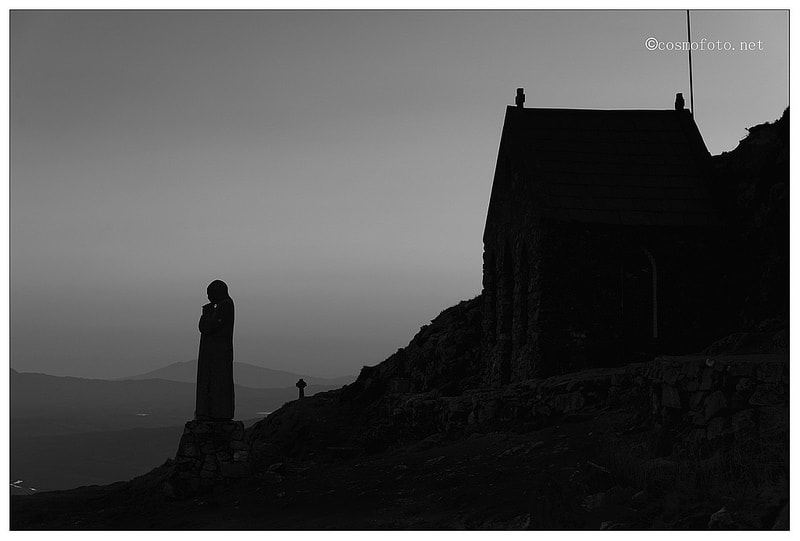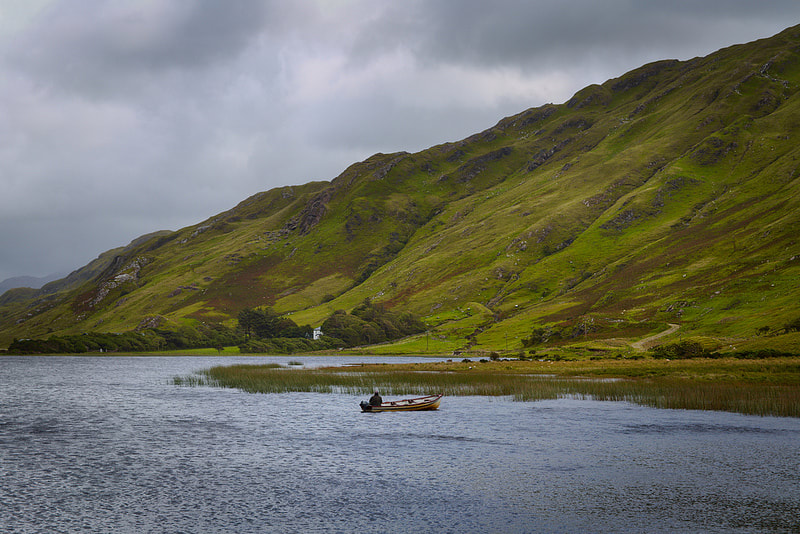- Home
- Process Worldview
- Community
- Art and Music
- Whitehead and Process Thinking
- Podcasts
- Spirituality
- Ecological Civilization
- Education
- Contact
- Social Justice
- Science
- Animals
- Sacred Poems
- Whitehead Videos
- Index of All Titles
- Practicing Process Thought
- Process Spirituality: A Spiritual Alphabet
- Recent Posts
St. Patrick: The Perfect Saint for Lent
by Teri Daily
|
March 17th – a date that always falls in the season of Lent – is the feast day of St. Patrick, the patron saint of Ireland. We typically celebrate his feast day with parades, green-colored clothes, corned beef, cabbage and beer. But not many people actually know the story of his life. Patrick was born in the northwest corner of Britain sometime in the late fourth century. At the age of sixteen, he was kidnapped by Irish raiders, taken to Ireland, and forced to work as a shepherd. Conditions were hard and miserable. Prayer became his solace, and it was during this time in captivity that his Christian faith became real to him. After six or so years in slavery, Patrick heard a voice telling him to go to a distant port where a ship would be waiting to take him back to Britain. He did as the voice told him and gained safe passage back to Britain, where he was eventually ordained a priest and then a bishop.
While back in Britain, Patrick received a vision, described in The Confession of St. Patrick as follows: I saw a man coming, as it were from Ireland. His name was Victoricus, and he carried many letters, and he gave me one of them. I read the heading: "The Voice of the Irish". As I began the letter, I imagined in that moment that I heard the voice of those very people who were near the wood of Foclut, which is beside the western sea—and they cried out, as with one voice: "We appeal to you, holy servant boy, to come and walk among us."[1] Patrick returned to Ireland, determined to evangelize the Irish people. His missionary work was remarkable; he is credited with baptizing thousands of people, erecting many churches, and establishing monasteries. The history that comes down to us holds that no one was martyred as Ireland became an increasingly Christian nation — which is fairly unusual in Christian history. Maybe it was because the native religion already emphasized the divine presence in the world, so the Incarnation wasn’t an offensive or crazy idea. Perhaps Patrick’s own familiarity with the Celtic language and druid religion — a familiarity which came from his time as a slave in Ireland — played a role in how he shared the gospel. We can speculate about why his mission was so successful, but we don’t know. What we do know is that the deepest darkest place in Patrick’s life became a place bursting at the seams with new life. The Ireland of fear, cold, and loneliness that he knew as a slave became for him an Ireland of community, churches, and miracles. Perhaps this is why, in the Episcopal Church, a passage from Ezekiel is chosen as one of the scripture readings for this feast day. Ezekiel was both priest and prophet. He lived in Judah during the time of the deportations to Babylon. He was himself actually taken into exile in 597 BCE, a few years before Jerusalem fell and the temple was destroyed. Early in his career as prophet, he proclaimed the coming destruction of Jerusalem. But after the fall of Jerusalem, his message shifted and became one of hope — of the eventual restoration and rebuilding of Israel. In the second half of the book of Ezekiel, we see a picture of a land that was once destroyed and laid to waste now bustling with new construction and crowds of people. Those who pass by shall say: “This land that was desolate has become like the garden of Eden; and the waste and desolate and ruined towns are now inhabited and fortified” (Ezekiel 36:35). With this image God, in effect, says to Israel, “Have hope. Yes, your towns are in ruin, but just look what I can do with piles of rubble.” Where the people see crumbled, flattened towns, God sees the potential for busy sidewalks and new homes. Is that just the way God always sees things? When Patrick was on the Irish hillside tending the animals, cold and wet and alone, did God see the potential for that time to birth a strong faith, or for Patrick to learn things that would be necessary for building up the Church in Ireland? In the midst of death and despair, is new life always a thought or dream in the mind of God? And, if so, can we learn to see like God? Just like we’ve come to understand with the discoveries of science that empty space isn’t really empty after all, but is brimming with activity, can we also learn to find the promise of new life even in the midst of pain and death, to see a beginning in an ending? There’s a danger here — namely that we’ll take this new way of seeing too far. It’s a danger because to look straight past Israel’s destruction would not be honest to Israel’s experience or faith. To skip over Patrick’s experience in Ireland as a slave and, instead, to move straight to Patrick the missionary would be to miss the point entirely. The promise of faith is not that we will live perfectly or that bad things will never happen to us. The promise of faith is that in the very midst of struggle, despair, and even death, God comes and speaks a word of life and love. The grave becomes the very place of resurrection. That’s why we can’t ignore the hardest parts of life and still leave the gospel intact. This is an especially important idea during the season of Lent. During Lent we do the hard work of self-reflection — we take a close look at our sins, our shortcomings, the way things should be in our lives but are not, the pain we have caused others, the destruction we have brought to the earth, and the consequences our actions will have on generations after us. We do this work individually and as a community. But we don’t just do this work of self-reflection for forty days and then change gears and celebrate Easter, as if Lent and Easter are two unrelated seasons. Instead, we do this work knowing that the places of our lives that lie in ruin and waste are the very same places where new buildings will spring up. The places where we are lonely and enslaved will become the very places where the love of God spills over. Lent isn’t an optional side trip on the way to Easter; it is the path to resurrection itself. So do the hard work of Lent. Take heart in knowing that Jesus is with us to the ends of the earth — even in the dark and hidden places of our lives, the places where we suffer, the places where we struggle to become who we were created to be. The great Celtic saints such as Patrick saw Jesus as the great companion on the way, always with us in our experiences. And if the crucified one is with us, the hope of Easter is always near. [1] “The Confession of St. Patrick,” Ancient Texts website, http://www.ancienttexts.org/library/celtic/ctexts/p01.html. |









